Overview
Beginning in May 2018, Proofpoint researchers observed a previously undocumented downloader dubbed AdvisorsBot appearing in malicious email campaigns. The campaigns appear to primarily target hotels, restaurants, and telecommunications, and are distributed by an actor we track as TA555. To date, we have observed AdvisorsBot used as a first-stage payload, loading a fingerprinting module that, as with Marap, is presumably used to identify targets of interest to further infect with additional modules or payloads. AdvisorsBot is under active development and we have also observed another version of the malware completely rewritten in PowerShell and .NET.
Campaign Analysis
We first observed campaigns delivering AdvisorsBot in May 2018. Since then, the campaigns have used several themes in the email lures. The first is a “double charge” lure that appears to target hotels (Figure 1). The second is a “food poisoning” lure for restaurant targeting (Figure 2). The third is a “catering order” lure also targeting restaurants (Figure 3). The fourth is a “resume” lure that targets telecommunications organizations (Figure 4). While we did observe targeting leaning towards hotels, restaurants, and telecommunications industries, we found that these campaigns were not as well-targeted as the lures might imply, with many messages going to targets unrelated to the contents of the lure.
In the May and June campaigns, the documents contained macros that executed a PowerShell command to download and execute AdvisorsBot. In the August 8 campaign, the actor shifted techniques, using a macro to execute a PowerShell command that in turn downloaded another PowerShell script. This script executed embedded shellcode that ran AdvisorsBot without writing it to disk. Finally, on August 15, the actor made another major change and the macro instead downloaded and executed a PowerShell version of AdvisorsBot that we called PoshAdvisor.
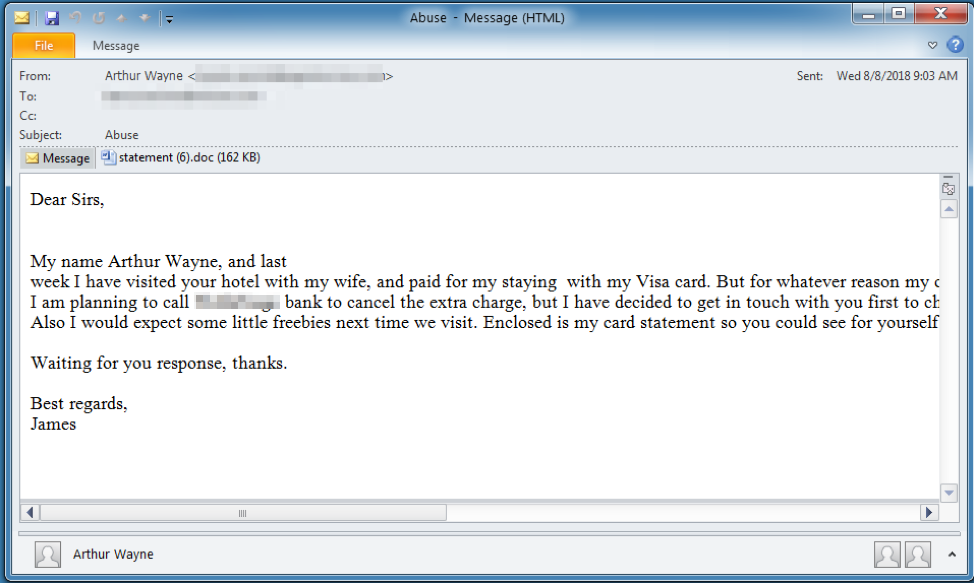
Figure 1: Message purporting to include information about a double charge delivering AdvisorsBot
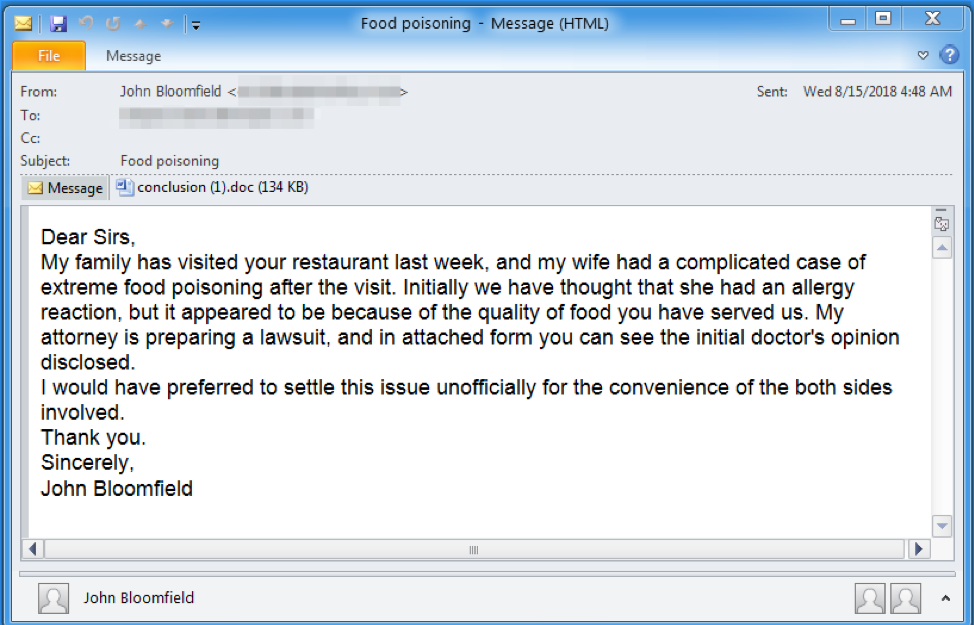
Figure 2: Message purporting to include information about a food poisoning incident and delivering PoshAdvisor
Figure 3: Message purporting to include information about a catering order and delivering AdvisorsBot
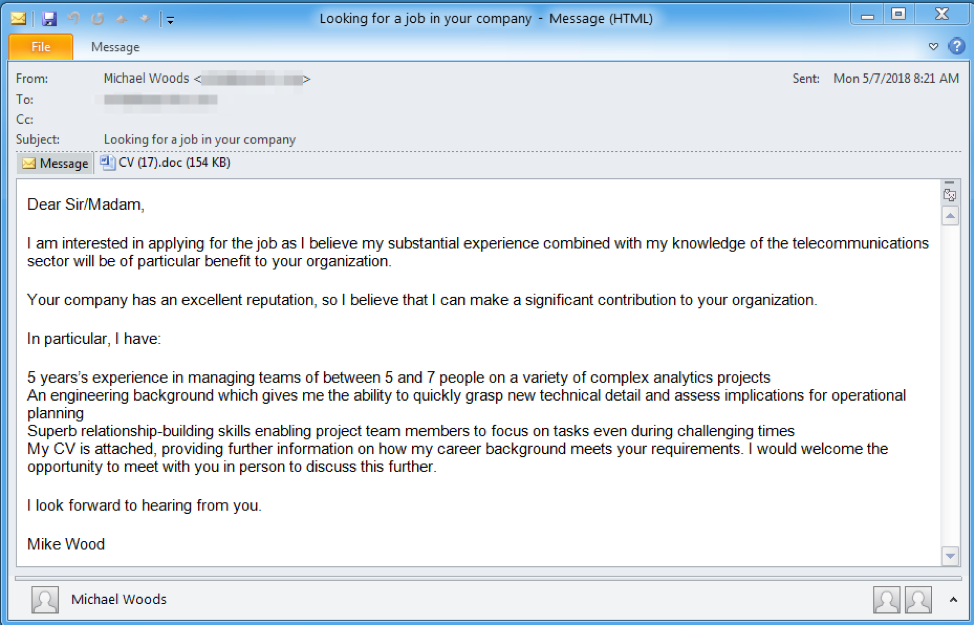
Figure 4: Message purporting to include a resume/CV delivering AdvisorsBot
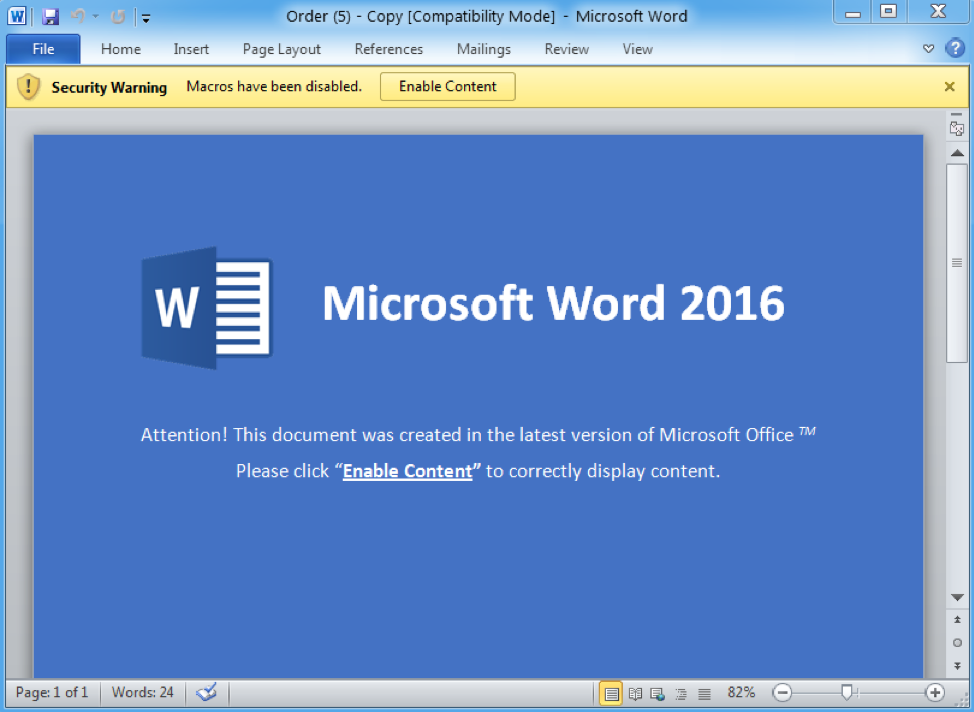
Figure 5: Example macro document lure
Malware Analysis
The name “AdvisorsBot” is based on early command and control (C&C) domains that all contained the word “advisors”. The malware is written in C, but the threat actor has recently created an interesting fork of the code that we discuss in the “PoshAdvisor” section.
Anti-Analysis Features
Like most modern malware, AdvisorsBot employs a number of anti-analysis features. One of the most effective is the use of junk code--such as extra instructions, conditional statements, and loops--to considerably slow down reverse engineering. For example, comparing the beginning of a function (part of the URI generation discussed in the “Command and Control” section) from the x86 version of the malware (Figure 6) to the same function in the x64 version (Figure 7) which doesn’t seem to be as affected by the inclusion of the junk code as much.
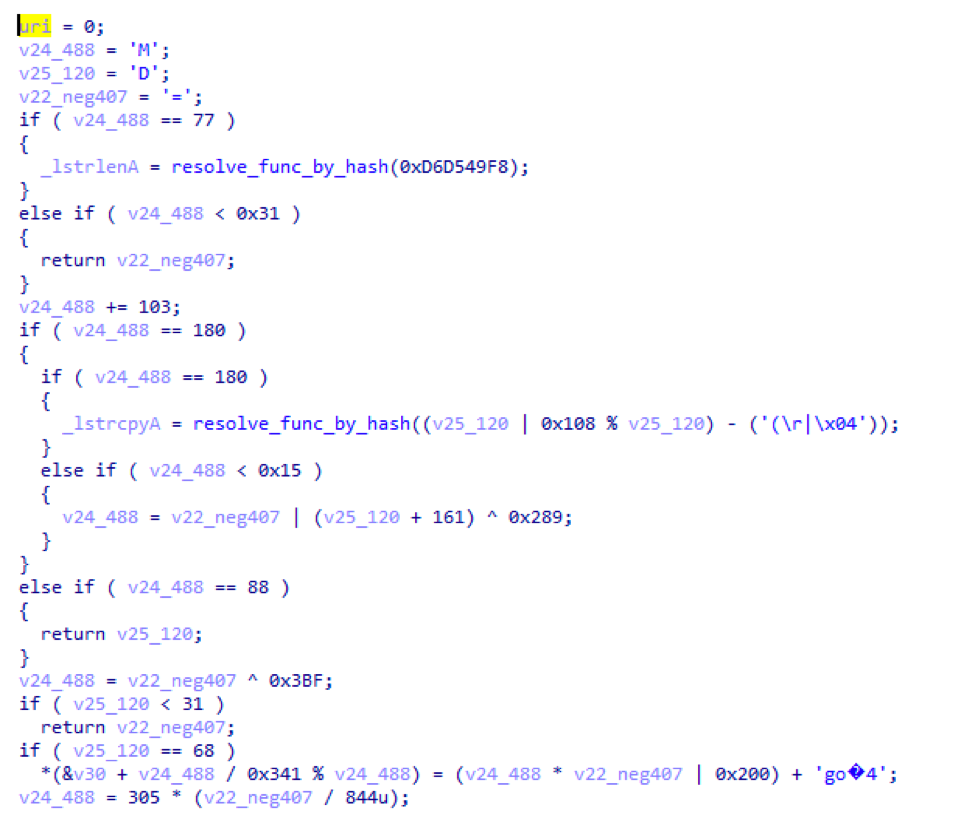
Figure 6: The x86 version of the malware contains significantly more instances of junk code
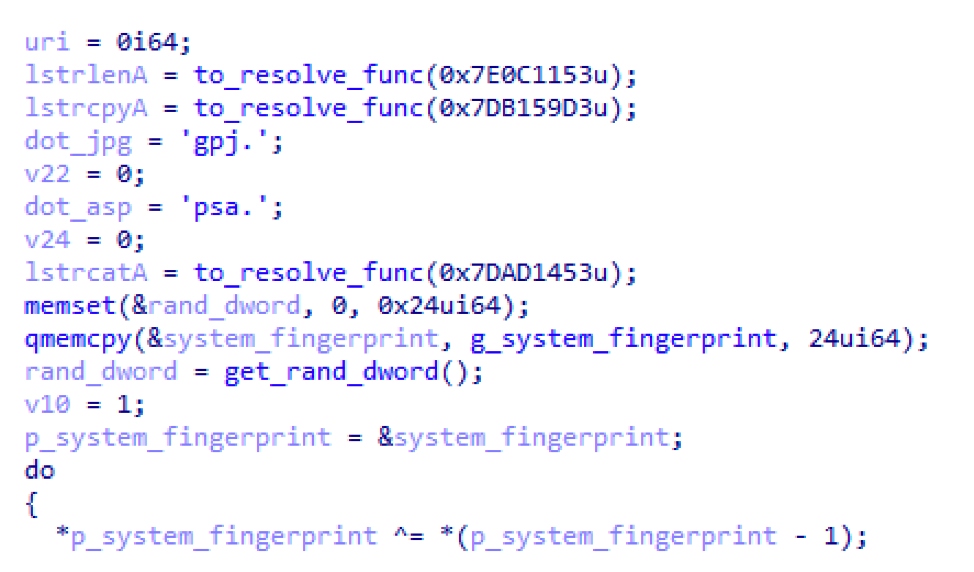
Figure 7: The x64 version contains far fewer instances of junk code
We can also see two more anti-analysis features in the same screenshots:
- Most strings are stored as “stack strings” in which the characters of the string are manually pushed onto stack memory with individual instructions. This makes it more difficult to quickly see the strings the malware uses.
- Windows API function hashing, which hinders identification of the malware’s functionality. A Python implementation of the hashing algorithm is available on Github [1].
To detect various malware analysis tools, AdvisorsBot takes a CRC32 hash of the system’s volume serial number and each running process name and compares them to a list of hardcoded hash values. If it finds a match, the malware exits. To detect whether it is running on a virtual machine, the malware inspects the system’s firmware table (via a call to GetSystemFirmwareTable) for strings associated with virtual machine vendors. Again, if it finds a match, the malware exits.
In the August 8 campaign, it became clear that the threat actor was paying close attention to the characteristics of victims connecting back to their C&C servers. The updated version of AdvisorsBot in this campaign included an additional anti-analysis check that compared the system’s machine SID to a list of 13 hardcoded values (Figure 8). We assume that they have profiled sandbox or malware researcher systems in prior campaigns and blacklisted them.
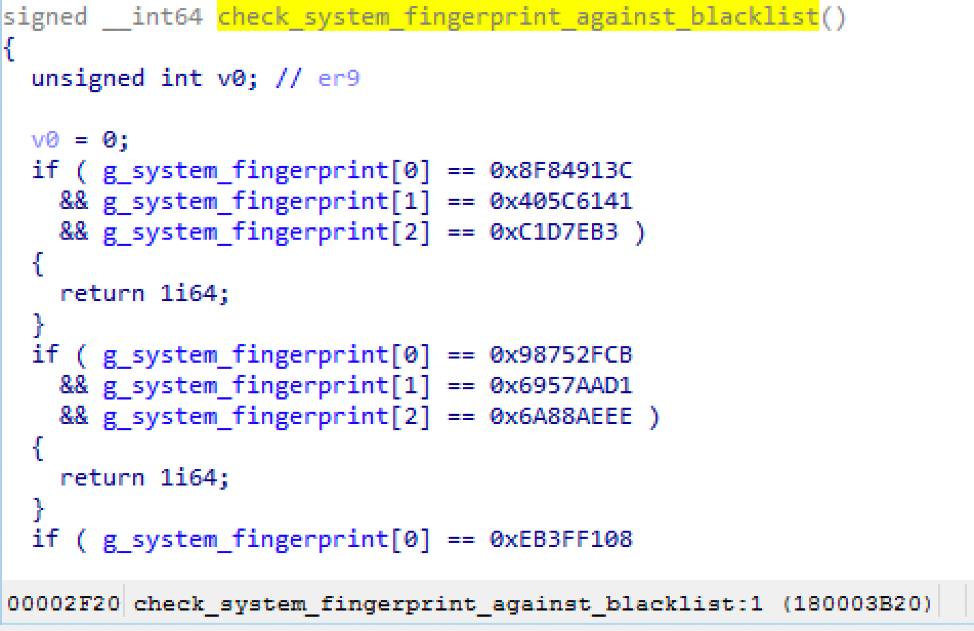
Figure 8: Snippet of code showing AdvisorsBot comparing the victim machine’s SID to a blacklist
Command and Control
The malware uses HTTPS to communicate with the C&C server. In the requests from the bot to the C&C, URIs contain encoded data that are used to identify a victim, for example:
/aa/rek5h/lnl5/s4zakljmo/4f/xbdju4a02tnxywx/etl2dni405a1khwxyg0r2.jpg
More specifically, the data that is encoded in the URI contains the machine SID, CRC32 hash of the computer name, some unknown hardcoded values, and the Windows version:
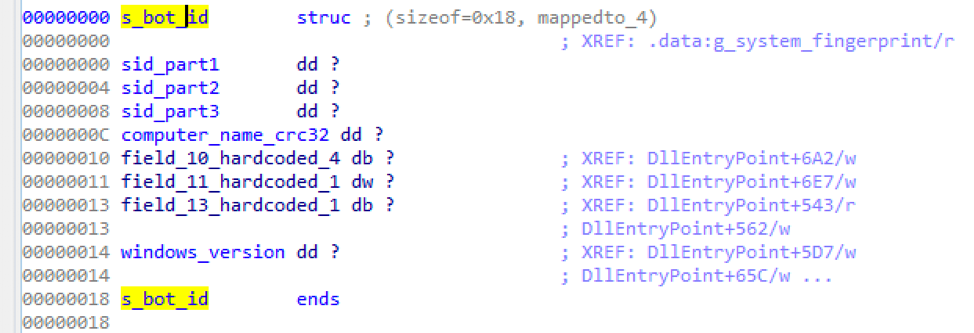
Figure 9: Snippet of code showing the data structure used during formatting of the URI
This data is encoded via the following steps:
- Random 4-byte XOR key is generated
- Data structure is XOR-encoded with the key and the key is prepended to the encrypted data
- The key and encrypted data are converted from binary to lowercase letters and digits with a binary encoding similar to base32
- Random slashes are added to make it look like a URI path
- A “.jpg” extension is added for GET requests and an “.asp” extension is added for POST requests
Commands from the C&C server are polled via GET requests. A response that contains a command is structured as shown below:
- Offset 0: Command
- Offset 4: Unknown, possibly module ID or command ID
- Offset 8: Length of encrypted data
- Offset 12: CRC32 hash of plaintext data
- Offset 16: XTEA IV
- Offset 24: XTEA key
- Offset 40: XTEA encrypted data using CBC mode
AdvisorsBot currently can receive and act on only two commands:
- Load a module (command ID 1)
- Load shellcode in a thread (any other command ID)
Modules are DLLs that are manually loaded (allocate a buffer, copy the PE header and sections, relocate, resolve the import table, and execute the entry point). A “communications” function is passed from the downloader to the module so that it can send back data to the C&C server. These requests have the same style of URIs, but use POST data structured as shown below:
- Offset 0: Length of encrypted data
- Offset 4: CRC32 hash of plaintext data
- Offset 8: XTEA IV
- Offset 16: XTEA key
- Offset 32: XTEA encrypted data using CBC mode
Modules
At the time of publication we have only observed a system fingerprinting module being sent from a C&C server. It performs the following activities and sends their output back to the C&C:
- Takes a screenshot and base64 encodes it
- Extracts Microsoft Outlook account details
- Runs the following system commands:
- systeminfo
- ipconfig /all
- netstat -f
- net view
- tasklist
- whoami
- net group "domain admins" /domain
- dir %USERPROFILE%\Desktop
- wmic /namespace:\\root\securitycenter2 path antivirusproduct GET displayName,pathToSignedProductExe
PoshAdvisor
On August 15, we saw what initially looked like a second AdvisorsBot campaign for the month. However, after closer analysis of the payload we were surprised to find that the threat actor had essentially rewritten AdvisorsBot using PowerShell and a .NET DLL embedded inside the PowerShell script. We track this variant as “PoshAdvisor” and, while it is not an exact duplicate of AdvisorsBot, it does contain the same:
- URI generation and format (Figure 10)
- C&C response format and encryption
- Module download and execute functionality
- System fingerprinting functionality (Figure 11)
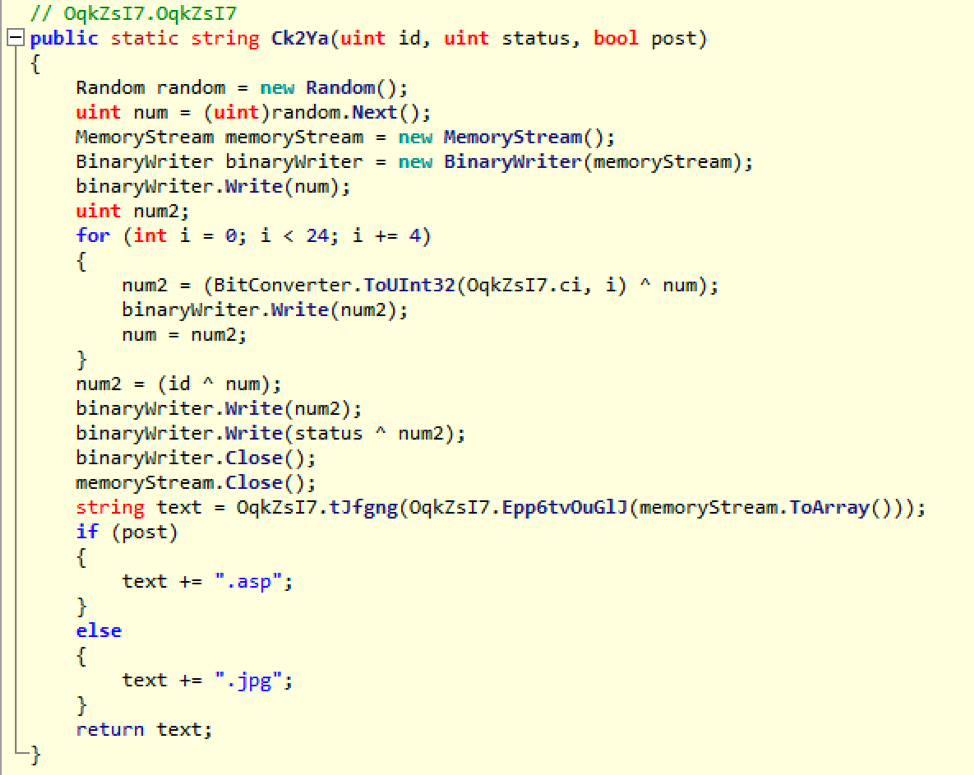
Figure 10: Snippet of code showing similarity of PoshAdvisor’s URI generation

Figure 11: Snippet of code showing similarity of PoshAdvisor’s system fingerprinting
This is noteworthy since it is fairly rare to see malware be rewritten in a completely different programming language.
Conclusion
While it remains to be seen whether this threat actor will continue to distribute AdvisorsBot, PoshAdvisor, or both in future campaigns, this pair of downloaders, with extensive anti-analysis features and increasingly sophisticated distribution techniques, warrant further investigation. AdvisorsBot, along with another similar but unrelated malware that we detailed last week, point to a growing trend of small, versatile malware that give actors flexibility to launch future attacks and identify systems of interest that may lend themselves to more significant compromise.
References
[1] https://github.com/EmergingThreats/threatresearch/blob/master/advisorsbot/func_hashes.py
Indicators of Compromise (IOCs)
|
IOC |
IOC Type |
Description |
|
6d73bea291bf6114af8333031187ac05fdfc8afe05025b272f510a6977b2153e |
SHA256 |
Example Document Attachment (May) |
|
hxxp://chklink[.]us/upd.bin |
URL |
AdvisorsBot download URL (May) |
|
9dd12d3a32d2ba133bac8747f872f649b389a9cf3f4baaa9fad69a43d2e4f982 |
SHA256 |
AdvisorsBot (May) |
|
investments-advisors[.]bid |
Domain |
AdvisorsBot C&C (May) |
|
interactive-investments[.]bid |
Domain |
AdvisorsBot C&C (May) |
|
|
|
|
|
1eb1ef64a9b41267e362597e071e181acb86b50e708ede4a9448689da7fb2425 |
SHA256 |
Example Document Attachment (June) |
|
hxxp://finance-advisors-ca[.]bid/ldr.bin |
URL |
AdvisorsBot download URL (June) |
|
ee32c4e0a4b345029d8b0f5c6534fa9fc41e795cc937d3f3fd743dcb0a1cea35 |
SHA256 |
AdvisorsBot (June) |
|
real-estate-advisors[.]win |
Domain |
AdvisorsBot C&C (June) |
|
secur-real-estate[.]bid |
Domain |
AdvisorsBot C&C (June) |
|
34a2fc4eb718a8b13a44cfb851ccac6cf63e54fe7e7ab145a5bdeb6def2d4620 |
SHA256 |
AdvisorsBot system fingerprinting module (June and August) |
|
|
|
|
|
956eae6395ed5e1b2d49ffa08ff85b42d1fc210531ab9c48c2d76e6ee38c9781 |
SHA256 |
Example Document Attachment (August) |
|
hxxp://204.155.31[.]167/bootstrap.css |
URL |
AdvisorsBot download URL (August) |
|
c659b00a65a574a08fff64662581a8ecae7eafa38850a6c7c19b88c2085a1c03 |
SHA256 |
AdvisorsBot (August) |
|
185.180.198[.]56 |
IP |
AdvisorsBot C&C (August) |
|
|
|
|
|
fdf5072b904ba9148d8b98e4ba01987e644449e2b10f033ca4d2f967dc502a58 |
SHA256 |
Example Document Attachment (August) |
|
hxxp://162.244.32[.]185/jquery.js |
URL |
PoshAdvisor download URL (August) |
|
2a27d7ad1f16c90767e1cf98c92905aa5a3030a268c8206462c5215a87d0e132 |
SHA256 |
PoshAdvisor PowerShell script (August) |
|
335229e528c6348a3dc5941c434dc67acb031f297d9ac25e53a2a56d3df3e255 |
SHA256 |
PoshAdvisor .NET library (August) |
|
162.244.32[.]148 |
IP |
PoshAdvisor C&C (August) |
ET and ETPRO Suricata/Snort Signatures
2832183 | ETPRO TROJAN PoshAdvisor SSL/TLS Certificate Observed
2830733 || ETPRO TROJAN Observed AdvisorsBot CnC Domain Domain (investments-advisors .bid in TLS SNI)
2830732 || ETPRO TROJAN Observed Malicious SSL Cert (AdvisorsBot CnC Domain)

